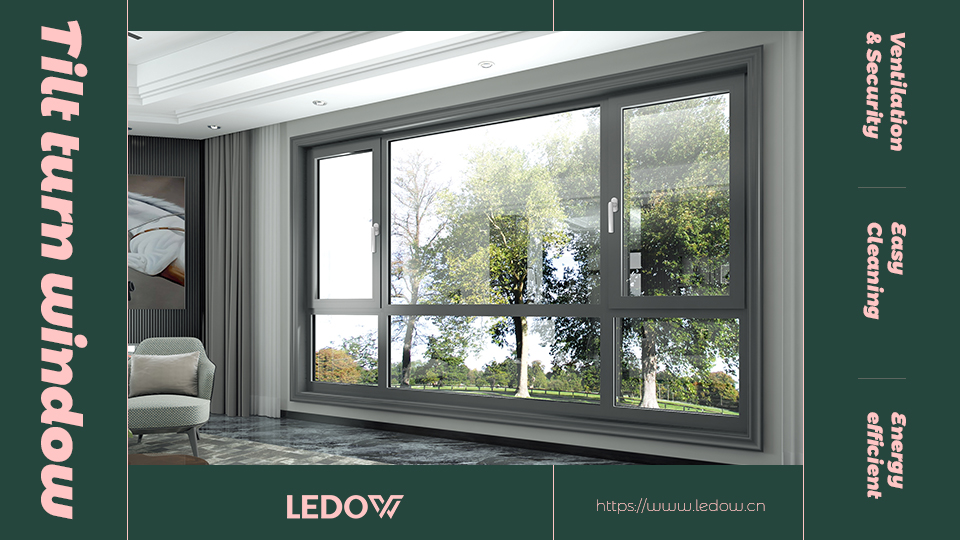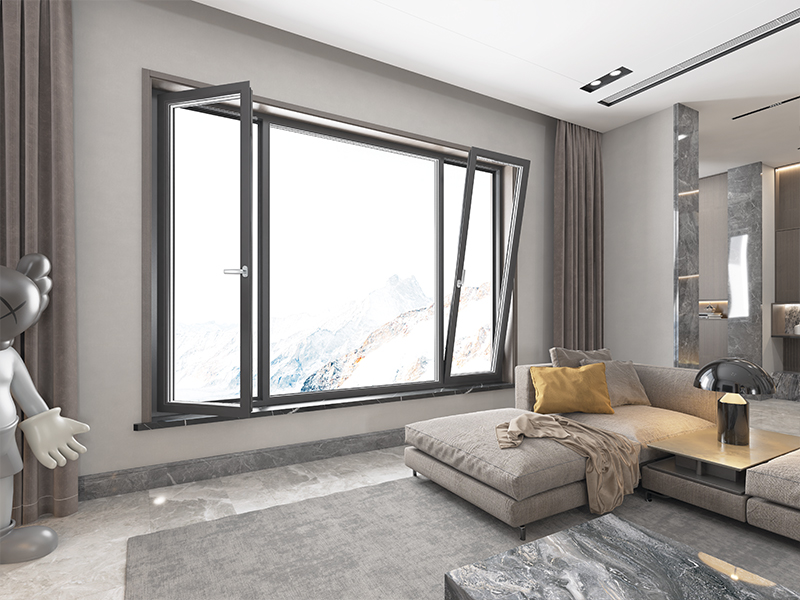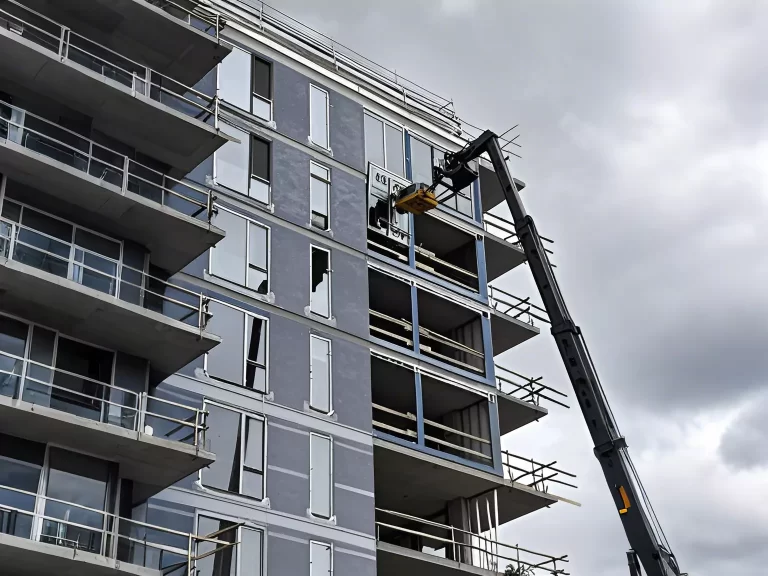Table of contents:
- What is a tilt and turn window?
- How Do Tilt-and-Turn Windows Operate?
- The History Of Tilt And Turn Windows
- Pros and Cons of Tilt and Turn Windows
- Casement vs. Tilt and Turn Windows
- How much do tilt and turn windows cost?
Tilt-and-turn windows, though predominantly favored in Europe and China, are steadily gaining traction in the United States. This growing interest means that not all window suppliers offer them. However, for homeowners seeking an elegant, versatile window solution that maximizes natural light and functionality, tilt-and-turn windows warrant consideration.
What is a tilt and turn window?
Tilt-and-turn windows distinguish themselves with their dual-functionality design. They feature a unique hinge mechanism that allows for two distinct modes of operation: they can either tilt inwards from the top or swing open inwardly like a traditional casement window. This flexibility offers homeowners the choice between full ventilation and controlled airflow, all while enhancing security.
How Do Tilt-and-Turn Windows Operate?
Tilt-and-turn windows function through two primary modes:
Turning Mode: The window opens fully inward via side hinges, akin to a door, facilitating ease of cleaning the exterior from inside and allowing for unobstructed ventilation and views.
Tilting Mode: The window tilts inwardly from the top, utilizing bottom hinges. This partial opening allows for controlled airflow, privacy, and protection against adverse weather conditions.
The operation is controlled through a handle with two distinct positions: turning the handle 90 degrees engages the side hinges for a door-like opening, while turning it 180 degrees activates the tilt function. These mechanisms ensure smooth, controlled operation, with no option for outward opening.

The History of Tilt-and-Turn Windows
The inception of tilt-and-turn windows dates back to early 20th-century Germany, with the first patent filed in 1909 by German engineer Karl Feuerbach. The post-war era saw a surge in their popularity across Europe due to advancements in manufacturing and heightened demand for energy-efficient solutions. Presently, tilt-and-turn windows are globally manufactured and are a staple in both residential and commercial settings, particularly in Europe, where they comprise approximately 60% of new window installations.
Pros and Cons of Tilt and Turn Windows
Advantages:
Contemporary Aesthetic: Tilt-and-turn windows offer a sleek, modern look with clean lines and minimal hardware, enhancing the visual appeal of any property.
Superior Sound Insulation: Their robust sealing and multi-point locking systems contribute to excellent energy efficiency and effective soundproofing, fostering a tranquil indoor environment.
Enhanced Safety: The tilt function minimizes potential hazards, particularly in homes with children, by restricting the window’s opening size and preventing full swings.
Disadvantages:
Higher Initial Cost: The advanced engineering and multi-functionality of tilt-and-turn windows generally result in a higher upfront cost compared to traditional windows. However, their long-term benefits in energy efficiency and functionality can justify the investment.
Design Complexity: The sophisticated mechanism of tilt-and-turn windows can pose challenges in terms of repairs and maintenance, potentially increasing costs and complexity.
Limited Aesthetic Versatility: While their modern design is appealing, tilt-and-turn windows may not align with every architectural style, particularly traditional or period-specific designs.
Learning Curve: The dual-functionality of tilt-and-turn windows may require an adjustment period for users unfamiliar with their operation.
Get an Thermal Break Aluminum Windows Quote For Your Home →
Casement vs. Tilt-and-Turn Windows
Energy Efficiency: Both tilt-and-turn and casement windows are known for their energy efficiency. According to NFRC data, tilt-and-turn windows often outperform casement windows in terms of U-value when comparing the same materials and glass configurations.
Noise Insulation: Tilt-and-turn windows may have a slight edge in noise reduction due to their superior sealing capabilities. This is particularly beneficial for homes situated in noisy environments.
Ventilation and Safety: Tilt-and-turn windows offer flexible ventilation options. They can be tilted for controlled airflow or fully opened for maximum ventilation. However, they need to be equipped with restrictors to prevent small children from climbing out when fully opened.
Security Features: Both window types provide robust security, but tilt-and-turn windows typically offer enhanced protection due to their multiple locking points. For homes with small children, tilt-and-turn windows are generally more child-friendly due to their higher, less accessible opening mechanisms.
Maintenance: Tilt-and-turn windows’ inward opening mechanism facilitates easy cleaning from inside, making them ideal for multi-story buildings. In contrast, casement windows may require ladders for cleaning higher installations, posing potential risks.
Design and Aesthetics: Tilt-and-turn windows are praised for their modern, functional design that complements a range of architectural styles. Casement windows, however, provide a classic, timeless look suited to both traditional and contemporary settings. The choice between the two depends on personal preference and the property’s architectural style.
Interior Decoration: Inward-opening windows may necessitate the removal of interior decorations for cleaning, which can be cumbersome. Outward-opening windows, however, allow for the retention of decorations, curtains, or blinds.
Installation Considerations: The installation of tilt-and-turn windows requires precise alignment due to their inward-opening mechanism. Casement windows, with their outward opening, may present different installation challenges, particularly in constrained spaces. Professional expertise is recommended for optimal installation.
Cost of Tilt-and-Turn Windows
You’ve decided to install a tilt and turn window in your home. The next question is, how much do new windows cost? The cost of tilt-and-turn windows varies based on factors such as materials, dimensions, and custom features. Generally, their initial cost is higher than traditional window types, reflecting their advanced design and multi-point locking system.
Don’t hesitate to reach out to us for expert guidance and high-quality window solutions.









